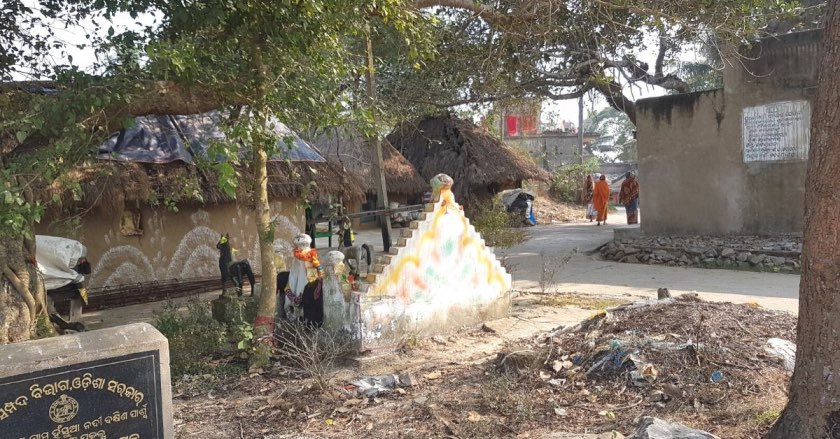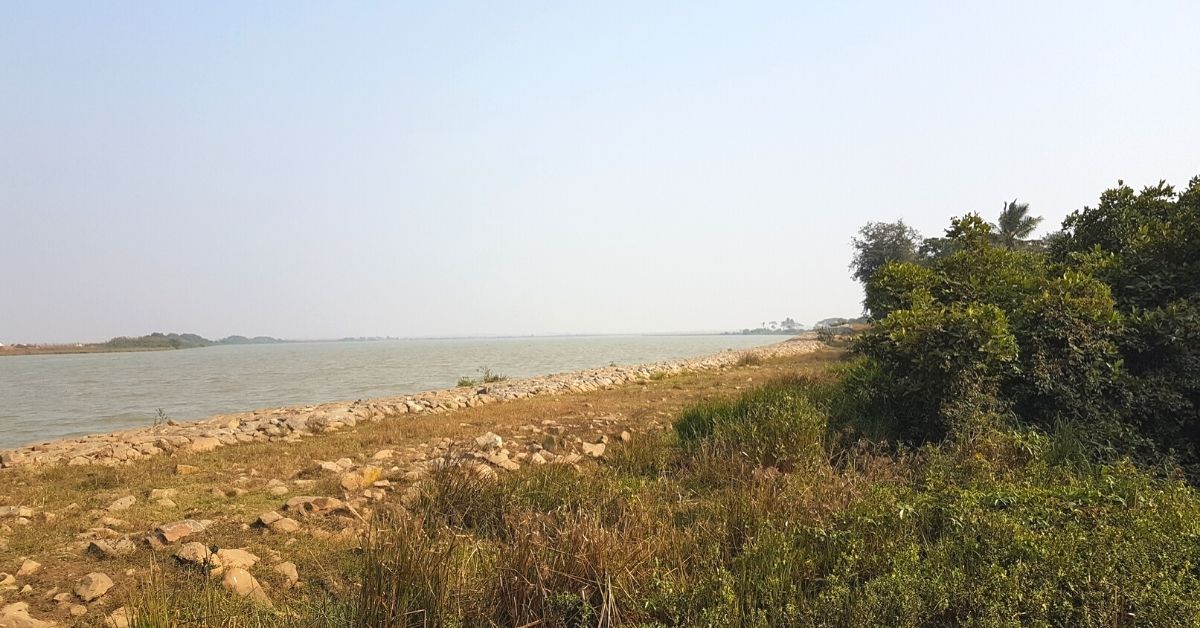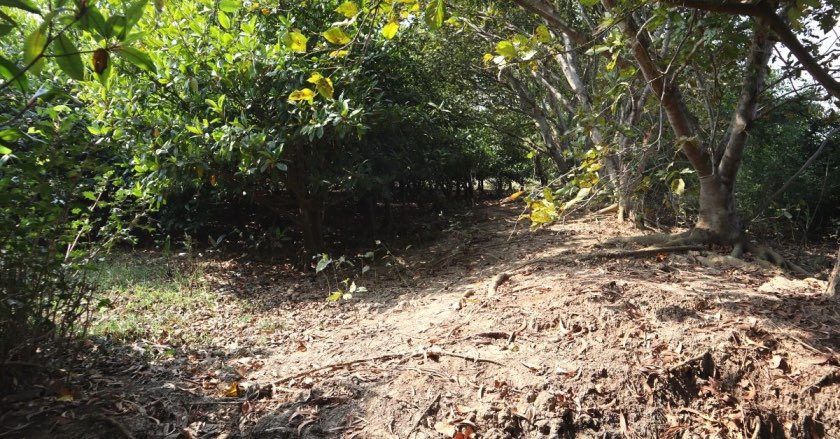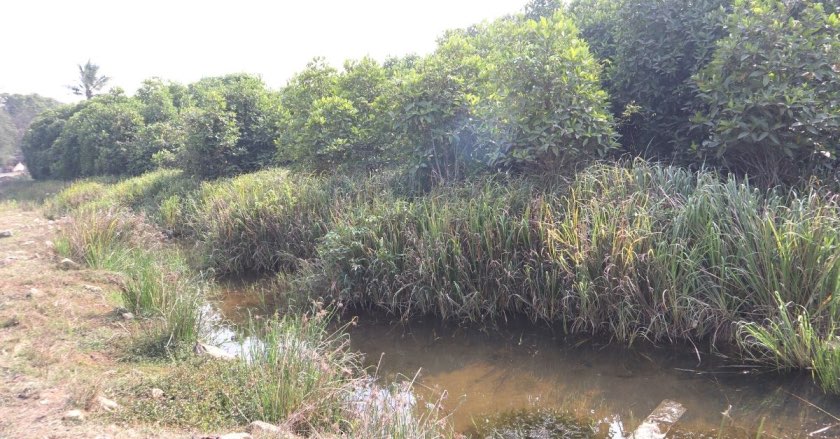One of India’s worst climate hotspots, Odisha experiences floods, cyclones, storms, droughts, among other natural disasters. With extreme weather conditions, the 492 km stretch coast spread across six coastal districts have seen heavy land erosion in the past.
Kendrapara is among the six districts in the most vulnerable hotspots—namely Pentha, Gahirmatha and Satabhya—that witness high erosion.
“The impact is so serious that since the 1970s, five villages have washed away in the sea. The government relocated the villagers to neighbouring locations. It is not a new concept for locals. One of the fresh instances is around 2017-18 when five villages from Satbhaya gram panchayat vanished from the map. Over 700 locals were moved to Bagapatia village by the government,” says Bijay Kumar Kabi, an environmentalist.
Bijay says that the government tried to install geosynthetic tubes to prevent soil erosion along the boundaries, but it could not stop it. “No technology can withstand the severity of the climate. Only nature can protect us from such devastation,” he adds.

Khirokot is one such village that was devoured by the sea in the 1970s after a super cyclone caused heavy erosion. It caused villagers to shift to the nearby Badakot village about five km from it. The village located between the mouth of the sea and the brackish river started witnessing the same phenomenon due to cyclones. The Bhitarkanika National Park lies adjacent to the settlement.
In 2008, Bijay visited Badakot, only to learn that about 300 meters across the 2 km coastal stretch had disappeared. The villagers were once again staring at the same fears and threats for their survival.
However, 12 years of consistent efforts put in by Bijay has scripted a success story. It has saved the village from land erosion. The massive task was achieved by planting 15,000 mangroves to create the natural barrier in 25 acres of barren land. He shares with The Better India about his Herculean feat.
Creating a forest fence
The natural coastal forest acts as a strong fence to take the harsh impact of extreme weather conditions and prevents land erosion.
“We planted 15,000, but they have increased to more than 50,000 trees over the years,” Bijay says with pride adding, “Thanks to the sincere efforts of the villagers who guarded the forest for years. The villagers now wake up to the green forest with birds chirping and biodiversity flourishing in the habitat created with 32 species of mangroves.”
The mangrove ecosystem is flourishing with species like Avicnnia, Kandelia, Rhizora, among others. It has also become popular for wildlife sightings such as one hyena, a wild boar, reptiles, and migratory birds.

Bijay, a native of Kendrapara, belongs to a farming family and founded the Action for Protection of Wild Animals (APOWA) to work towards wild animals and environmental issues. Bijay learned about the threats faced by the village and decided to support them with the conservation bid.
“I have been a witness to the wrath of environmental disasters and experienced its consequences all my life. I know that mangroves are the only solution to the problem. Many mangrove forests were lost due to repeated disasters but its role in reducing the impact of cyclones on human lives is vital,” he adds.
Citing an example, he says, “In 1999, the super cyclone killed 10,000 in the Jagatsinghpur district as the water swelled up to 20 feet high. Even parts of Kendrapara having mangroves lost 2,000 lives. The cyclone intensity remained the same in both the areas, but a lesser intensity was experienced in the latter.” He adds that the incident made him and the locals realise the importance of mangroves.
He started mobilising locals and creating awareness about mangroves and its plantation. Bijay shared seeds to create saplings. However, it was not a smooth experience. “People did not believe that planting mangroves will help reduce the impact. It became difficult to convince the villagers about the role played by forests to protect coasts. Moreover, it was challenging to convince the residents and make them believe that a forest could be created by planting mangroves,” he adds.
Barren land turns into lush green forest

The village folk, officials from the forest department and Bijay started the process of planting the forests. As the work picked up, more residents joined in the programme. “People started visiting and watched the work progress. Eventually, villagers took an active part and even started working rotating shifts to protect the forest from damages and anthropogenic threats such as tree felling. For seven long years, the villagers put sincere efforts by acting as a social fence for the forest. Mangroves grow slowly, and it was a long wait before the results became visible,” he adds.
Bijay says that slowly as the grass started growing around the trees and weeds flourished, it became a rich source of fodder for cattle. “The backwaters and river area near the roots of mangroves became fishing zones as fish bred in a conducive habitat. The villagers started generating a livelihood from it,” he adds.
As ecosystems thrived, the efforts started bearing results. “The area witnesses cyclones every year. But there has been no more land erosion since 2016. The trees have propagated to about 50,000, acting as a robust fence from heavy tides and cyclones,” he tells The Better India.
‘Fears of losing a village are lost’
“In 2000, the area where the trees stand was completely barren. There was not a single wooden stick in the vicinity. The erosion of villages forced migration and water entering the houses during cyclones became a common phenomenon,” says Niranjan Swain, head of the village.

Praising the efforts put by Bijay, Niranjan says, “We do not know how the environmentalists managed to establish a massive forest with no money from the villagers. The villagers only helped in planting at times.”
He adds that the efforts benefit all as the trees are green through the year, the cool breeze keeps the local temperatures low during summers, and riverside erosion stopped. “Our fears of losing our village have vanished forever. The cyclone Fani in 2019 did not cause any major damage to the village as the brunt of it was absorbed by the mangrove forest,” Niranjan adds.
Bijay says that the forest has matured over the years and residents from neighbouring villagers are approaching him wanting to replicate the model.
However, Niranjan is worried about the illegal tree cutting and exploitation of the forest resources by neighbouring villages.
The 70-year-old says, “I am very old now and probably have 10 years of life left, but I will protect the forest from threats until the last day of my life.”
Edited by Yoshita Rao
No comments:
Post a Comment